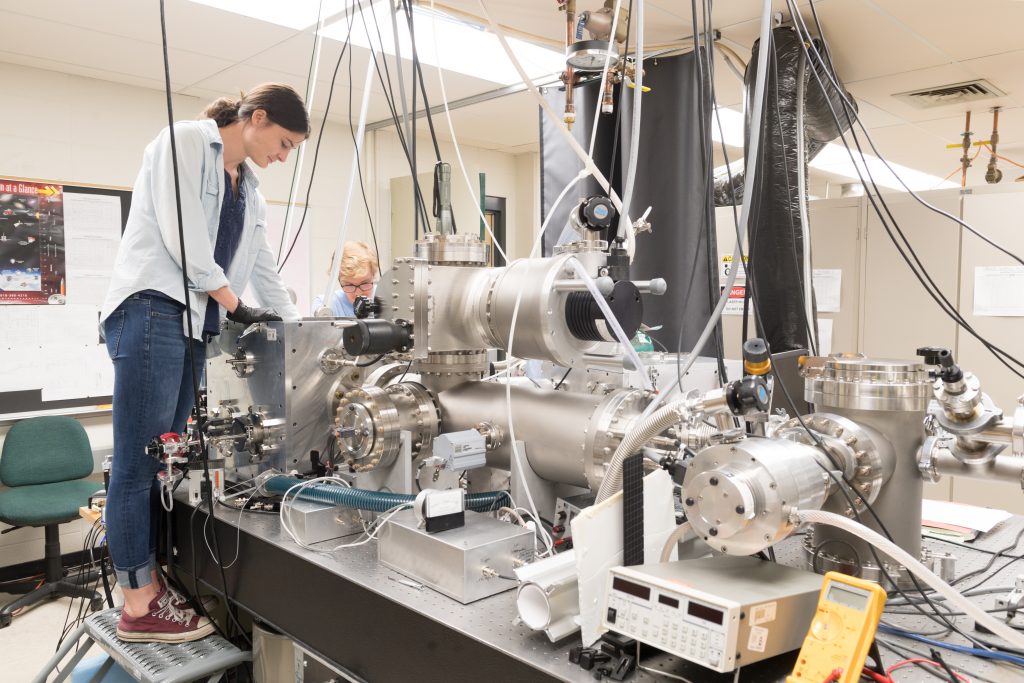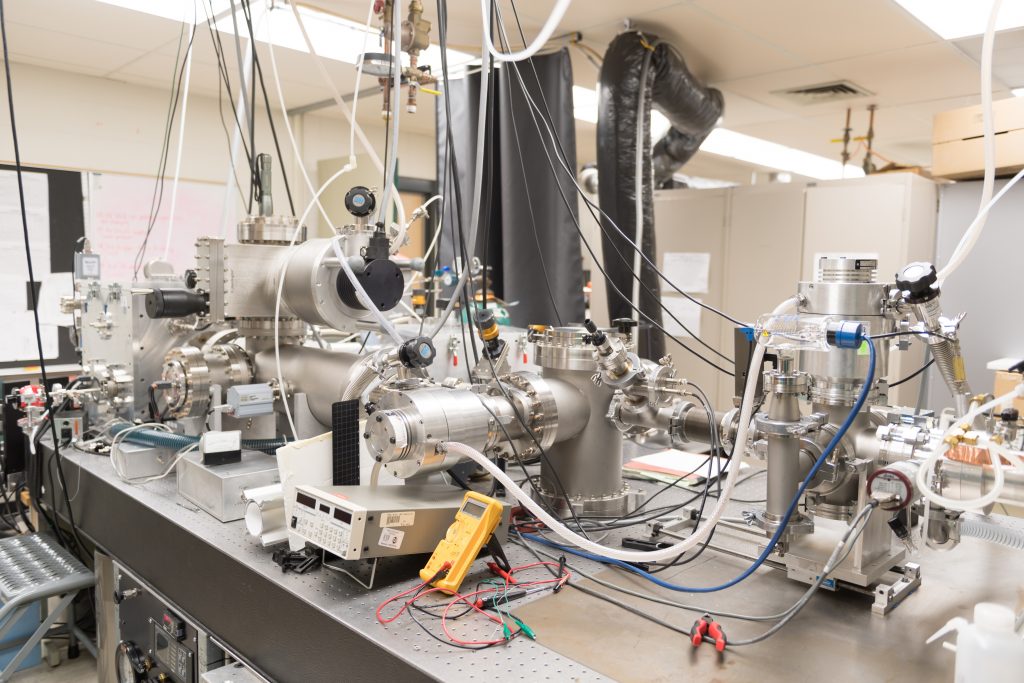
Mass spectrometry is broadly used to assess atomic and molecular composition. of solids. Chemical information is obtained by mass discriminating ions created by either laser ablation or sputtering. We have developed a mass spectrometer that uses the focused beam from an extreme ultraviolet laser operating at 46.9 nm wavelength that is capable to map chemical composition at the nanoscale. This is because the short wavelength laser light can be focused to spots of about 120 nm diameter. We have used the instrument to analyze chemical composition of organic and inorganic samples. The unique aspects of our method are: three dimensional nanoscale imaging capabilities, single shot acquisition and insignificant damage outside the ablated region. The method has applications in ,for example, materials, biology, chemical, atmospheric and forensic sciences.
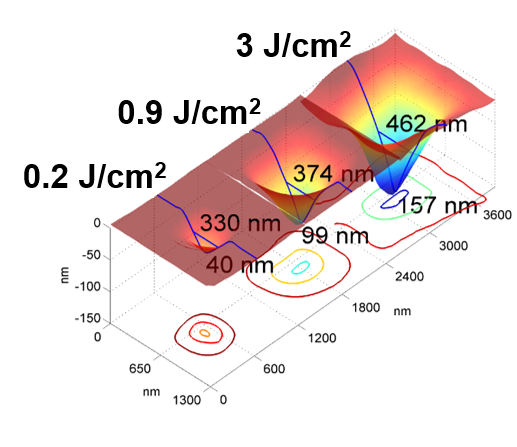

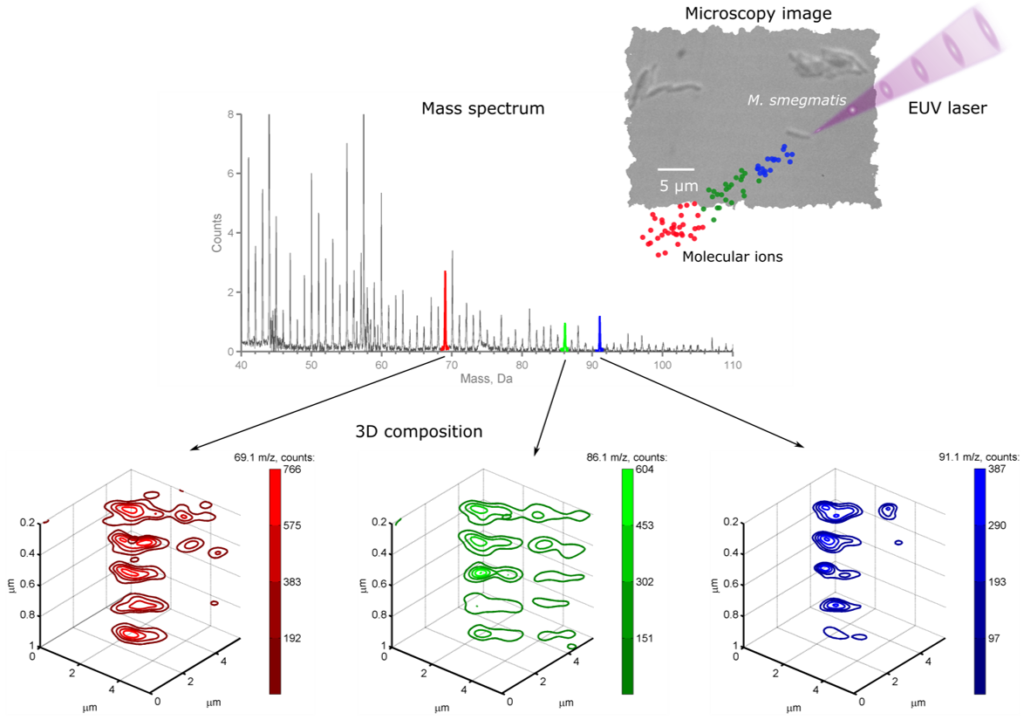
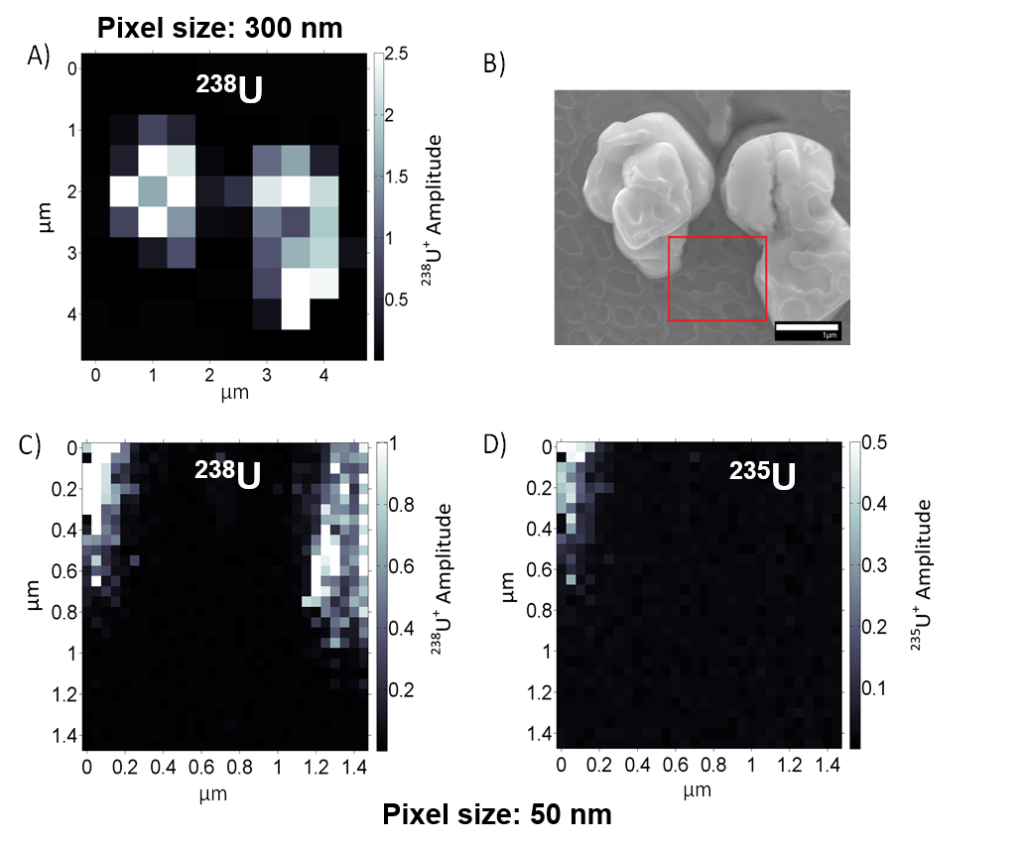
Selected Publications
I. Kuznetsov, J. Filevich, F. Dong, M. Woolston, W. Chao, E. H. Anderson, E.R. Bernstein, D.C. Crick, J.J. Rocca, C.S. Menoni, “Three-dimensional nanoscale molecular imaging by extreme ultraviolet laser ablation mass spectrometry,” Nat Commun, 6, Article No. 6944(2015); doi:10.1038/ncomms7944.
T. Green, I. Kuznetsov, D. Willingham, B.E. Naes, G.C. Eiden, Z.H. Zhu, W. Chao, J.J. Rocca, C.S. Menoni, and A.M. Duffin, “Characterization of extreme ultraviolet laser ablation mass spectrometry for actinide trace analysis and nanoscale isotopic imaging.” Journal of Analytical Atomic Spectrometry, 32(6): p. 1092-1100 (2017). DOI: 10.1039/c7ja00088j
Lydia A. Rush, John B. Cliff, Dallas D. Reilly, Andrew M. Duffin, and Carmen S. Menoni, “Isotopic Heterogeneity Imaged in a Uranium Fuel Pellet with Extreme Ultraviolet Laser Ablation and Ionization Time-of-Flight Mass Spectrometry,” Anal. Chem. 2021, 93, 2, 1016–1024. https://doi.org/10.1021/acs.analchem.0c03875
Funding
Department of Homeland Security
